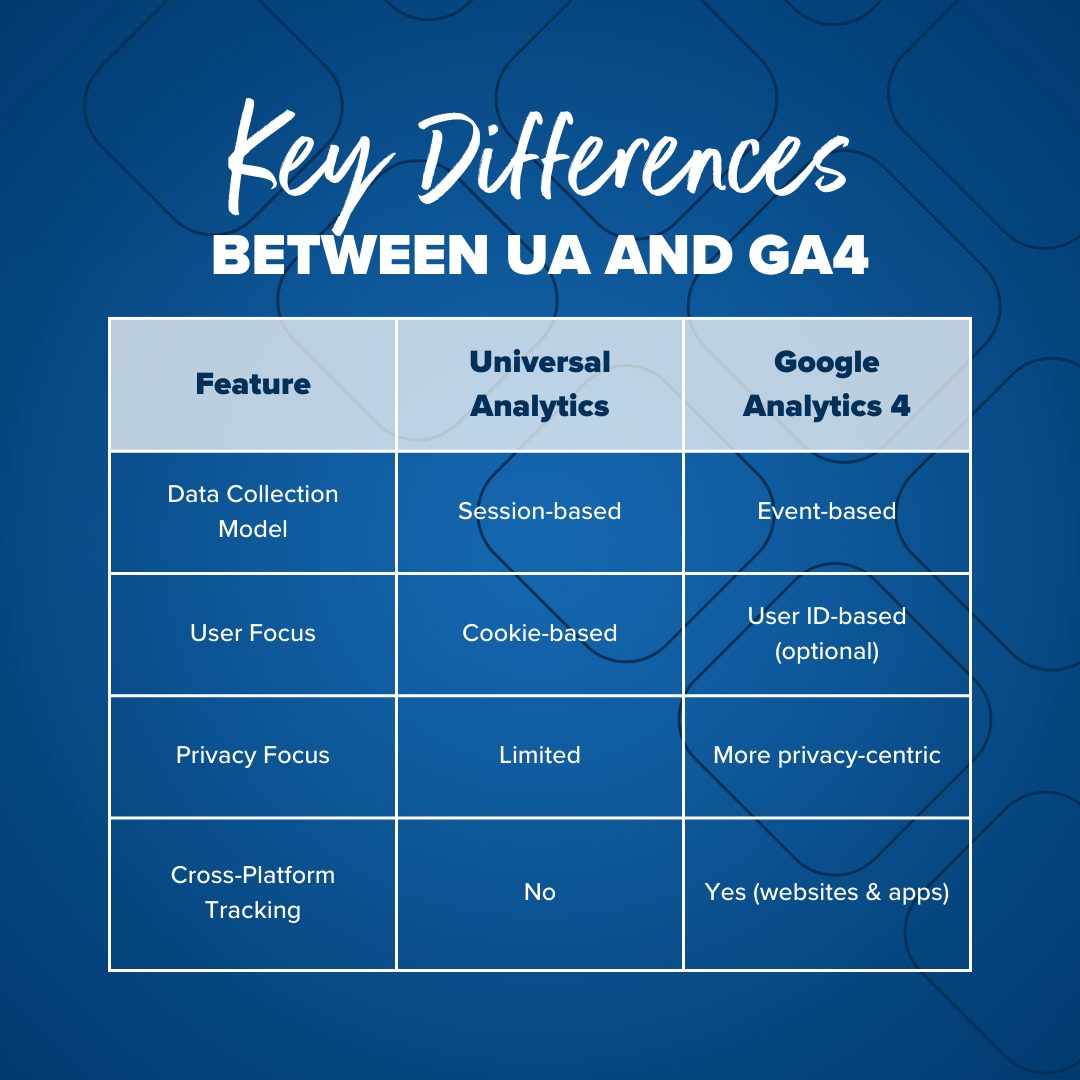
Building the Ultimate Credit Union Website: Your Guide to Success
Learn how to export Google Analytics data when migrating from UA to GA4 during the Universal Analytics sunset. Google will…
Read More
 As a business owner, data-driven decision making is crucial for success. Google Analytics (UA) has long been a mainstay for website owners, providing valuable insights into website traffic, user behavior, and marketing campaign performance. However, a significant change is on the horizon: Google will permanently delete all Universal Analytics data on July 1, 2024.
As a business owner, data-driven decision making is crucial for success. Google Analytics (UA) has long been a mainstay for website owners, providing valuable insights into website traffic, user behavior, and marketing campaign performance. However, a significant change is on the horizon: Google will permanently delete all Universal Analytics data on July 1, 2024.
This “UA Sunset” might seem like a distant concern, but neglecting to migrate to the new platform, Google Analytics 4 (GA4), can have serious consequences. Losing access to historical data hinders your ability to track website performance trends, understand user behavior patterns over time, and ultimately, make informed decisions about your marketing strategies.
This blog post serves as a comprehensive guide for businesses still using UA. We’ll cover the reasons for the UA sunset, the benefits of migrating to GA4, and most importantly, how to export and store your valuable UA data before it disappears.
The decision to sunset UA stems from a confluence of factors, including:
In short, Google is paving the way for a future-proof analytics solution that adapts to changing user behavior and privacy regulations.
While the looming data deletion deadline might seem like a reason to prioritize migration, there are even more compelling reasons to switch to GA4 now:
Here’s a breakdown of some key differences between UA and GA4:

By migrating now, you’ll gain a head start on familiarizing yourself with the GA4 interface, setting up custom events and conversions, and establishing historical data collection. This ensures a smooth transition and minimizes disruption to your data analysis.
While migrating to GA4 is crucial, it’s equally important to export your existing UA data before it’s deleted on July 1st, 2024. Here’s a step-by-step guide on exporting and storing your valuable UA data:
While exporting reports through Google Analytics is a viable option, several third-party tools offer additional features for exporting and archiving your UA data. These tools can provide:
While exporting your data allows you to preserve it, consider using data visualization tools to analyze and gain insights from your historical UA data. Tools like Google Data Studio or Tableau can help you create interactive dashboards and reports that highlight trends and patterns in your website traffic.
For experienced users, Google BigQuery offers a powerful solution for storing and analyzing large datasets. By exporting your UA data to BigQuery, you can combine it with other datasets and utilize advanced analytics features for deeper insights.
By migrating to GA4 and exporting your UA data, you can ensure a smooth transition to the new platform while preserving valuable historical insights. Remember, GA4 offers a plethora of benefits, including deeper user understanding, cross-platform tracking, and machine learning-powered analytics. By starting your migration now, you can maximize your time to learn the platform and ensure a seamless transition into the future of website analytics.
Bonus Tip: Contact Ironistic to help your business migrate from UA to GA4 and assist with sunset data export and storage.
Remember, the future of website analytics is event-based, privacy-focused, and powered by machine learning. By embracing GA4, you can gain a deeper understanding of your audience, optimize your website for better conversions, and make data-driven decisions that ultimately lead to business growth.
Comments
There are currently no responses.